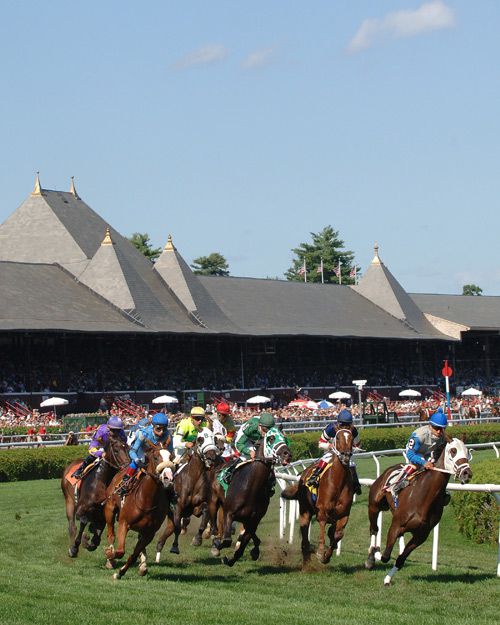Let me start by saying anytime a celebrity gets involved in horseracing, it is a positive thing. Bobby Flay, Jim Rome, Joe Torre, Drew Brees and others have been bitten by the horseracing bug. But Flay has taken it a step farther. Not only does he own, but he seems determined to make himself as well known in horseracing as he is as Iron Chef on the Food Network.
Will Farish, Jr – are you ready for a throwdown?
Flay decided to challenge Will Farish, Jr. for a seat on the Breeder’s Cup Board of Directors. That’s the same Will Faish, Jr. from Lane’s End farm. That would be the same Lane’s End Farm where A.P. Indy, Curlin and Zenyatta currently reside. Will Farish, Jr., the chairman of the Breeder’s Cup Board. Racing royalty versus the guy that owns, announces races, and hands out trophies in the winner’s circle from coast to coast.
Flay actually tied Farish in the original vote and there will be a runoff next week.
The question is, would Bobby Flay be good for the Breeder’s Cup and racing in general?
I’m on the fence. Oh, I don’t question Flay’s sincerity for a moment. I think he truly loves horseracing as much as he loves whipping out southwestern food at his many restaurants. But I have to wonder how the ubiquitous Flay can spread himself much thinner than he is already spread.
On the other hand, if horseracing has a novella of problems, you have to say a lot of them occurred while the Will Farish, Jr’s of the world have been at the helm. In all fairness the Breeder’s Cup is a pretty successful endeavor so the Board has done a pretty fair job of promoting it. But therein is the rub. Everybody loves the Triple Crown and the Breeder’s Cup, and they are big enough to attract sizable TV audiences. But it isn’t just those events that need attention.
Bobby Flay wasn’t raised on a big farm in the bluegrass of Kentucky. He is a New York City boy, and he still has a soft spot for the Big Apple. He’s an outsider, a man who wasn’t born into money but worked tirelessly to make himself famous, and wealthy, as a chef. Sometimes it is better to be lucky than good, and Flay happened to be born at a time when being a chef could produce as much celebrity as being a movie star. Can you imagine in 1964 some TV executive saying, let’s start a TV network with cooking shows and cooking games all day? Probably made as much sense as the guy who pitched a 24-hour weather channel.
In short, Bobby Flay is an outsider elbowing his way into the boardroom of racing biggest event.
Could racing use the new blood? Absolutely. Is Bobby Flay the right guy? I don’t know. I’d like to believe he will represent the everyman on the BC Board, but frankly, other than elevating his stock in racing, I’m not sure what he represents to the $2 railbird. As far as the people who voted for Flay, I think they made an obviously self-serving move at the expense of Will Farish, Jr. Putting Flay in the spotlight can only help their marketing efforts.
It’s not a fight that we can likely influence. The BC board is an insider’s game. But I’m going to take the fact that upstart Flay can knock off racing royalty as a positive. Who knows. Perhaps a whole new cohort of wannabe Iron Chefs will get into racing just like their hero Bobby Flay.
I’m not sure he’s the underdog, but I like the idea of upsetting some apple carts. Let’s have the throwdown.
